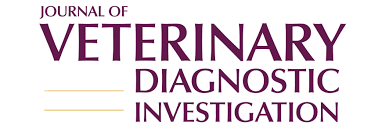Ver ítem
- xmlui.general.dspace_homeCentros Regionales y EEAsCentro Regional Santa FeEEA RafaelaArtículos científicosxmlui.ArtifactBrowser.ItemViewer.trail
- Inicio
- Centros Regionales y EEAs
- Centro Regional Santa Fe
- EEA Rafaela
- Artículos científicos
- Ver ítem
Development and field evaluation of an ELISA to differentiate Anaplasma marginale–infected from A. centrale–vaccinated cattle
Resumen
Immunization of calves with Anaplasma centrale is used to prevent acute anaplasmosis caused by A. marginale. Natural and vaccine-acquired immunity is detected through serologic tests based primarily on A. marginale recombinant major surface protein 5 (MSP5m) because it has 91% identity with MSP5 from A. centrale (MSP5c). We developed a displacement, double-antigen, sandwich ELISA (ddasELISA) to detect antibodies against A. marginale or A. centrale. For
[ver mas...]
Immunization of calves with Anaplasma centrale is used to prevent acute anaplasmosis caused by A. marginale. Natural and vaccine-acquired immunity is detected through serologic tests based primarily on A. marginale recombinant major surface protein 5 (MSP5m) because it has 91% identity with MSP5 from A. centrale (MSP5c). We developed a displacement, double-antigen, sandwich ELISA (ddasELISA) to detect antibodies against A. marginale or A. centrale. For ddasELISA validation, we analyzed serum samples positive for antibodies against Anaplasma spp. from cattle naturally infected with A. marginale (n = 300) or vaccinated with A. centrale (n = 255). Species-specific nested PCR (nPCR) assays were used to confirm infection. The optical density (OD) values obtained from antibodies directed at unique epitopes of A. marginale (ODAm) or A. centrale (ODAc) were used in the formula ODAm/ODAc. If the derived ratio was >0.38, the serum sample was considered positive for antibodies against A. marginale, with 98.9% sensitivity and 98.0% specificity. In a field evaluation, we analyzed 702 Anaplasma spp. antibody–positive serum samples from 34 herds by ddasELISA and nPCR; 571 were classified by ddasELISA as A. marginale–infected or A. centrale–vaccinated, with 84% agreement (κ = 0.70) between ddasELISA and nPCR. Our results indicate that ddasELISA could be used as a cost-effective alternative to molecular techniques to confirm infection with A. marginale in countries in which prevention is based on vaccination with A. centrale.
[Cerrar]

Fuente
Journal of Veterinary Diagnostic Investigation 35 (2) : 204-208 (March 2023)
Fecha
2023-03
Editorial
American Association of Veterinary Laboratory Diagnosticians
ISSN
1943-4936 (electronic)
1040-6387
1040-6387
Formato
pdf
Tipo de documento
artículo
Palabras Claves
Derechos de acceso
Restringido
 Excepto donde se diga explicitamente, este item se publica bajo la siguiente descripción: Creative Commons Attribution-NonCommercial-ShareAlike 2.5 Unported (CC BY-NC-SA 2.5)
Excepto donde se diga explicitamente, este item se publica bajo la siguiente descripción: Creative Commons Attribution-NonCommercial-ShareAlike 2.5 Unported (CC BY-NC-SA 2.5)


